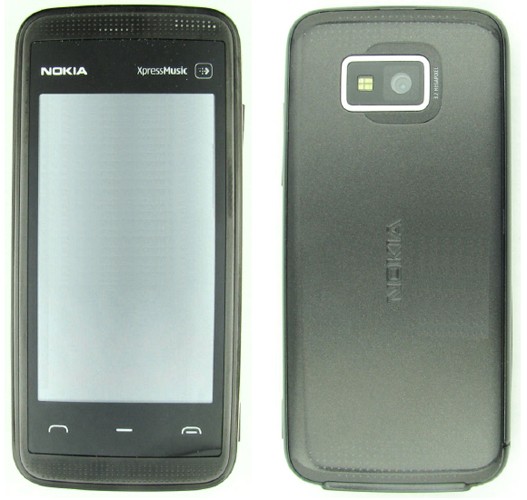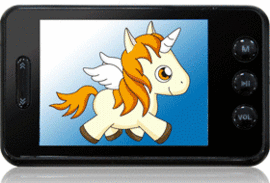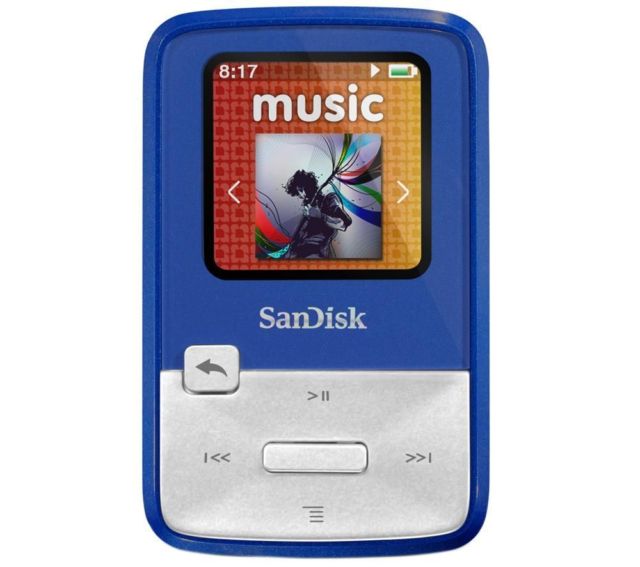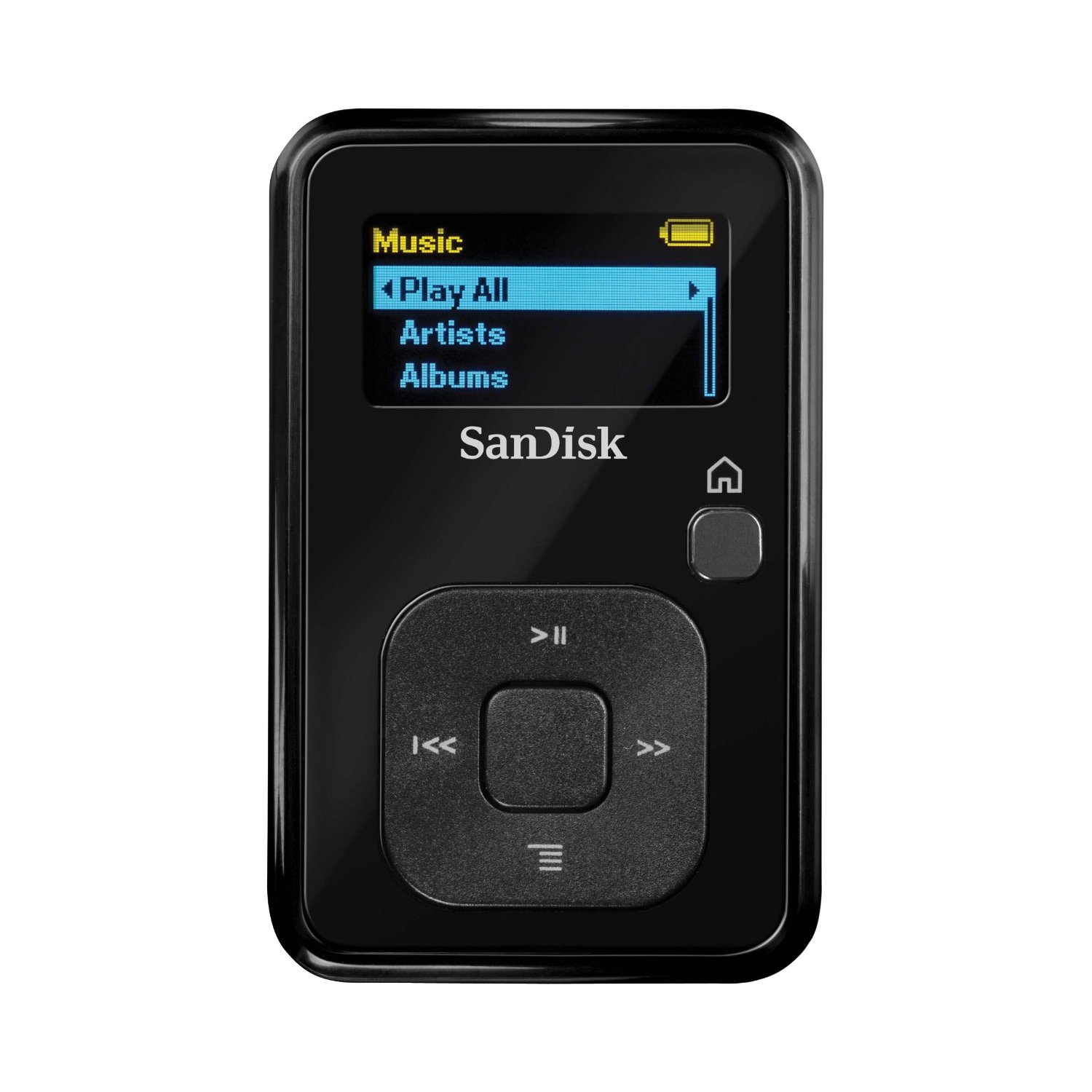Review: Portable music players I have used recently
Wednesday, 27 March 2013
Here is a short review of various portable music players, which justifies my recent purchase of a Sansa Clip Zip. Here are the features that were relevant to me:- No iTunes (or similar) software required to load music.
- Volume control not subject to statutory limits.
- Friendly user interface, with a display, offering an easy way to search a large library by artist name, album and song name.
- Tactile feedback on controls.
 |
| Nokia 5530 XpressMusic |
The touch-screen user interface is not particularly responsive (it's nothing like a modern smartphone) and also cannot cope with vibration, so it's difficult to use the music player while also using (say) a treadmill. The lack of tactile feedback makes it impossible to use the music player without also looking at it.
Points in favour of this alleged "music phone" are that the device appears as a USB mass storage device, and no iTunes (or similar) software is required to use it. The device uses a Micro SD card for storage, so you can expand the available space easily.
Comparison 2: Frustrated with Nokia's "music phone", I switched to a curious device I had bought in Taiwan some years ago. This Ergotech UC203 device (pictured) is typical of low-cost unbranded players.
 |
| Ergotech UC203 |
The Ergotech device was eventually (literally) dropped down a toilet (by accident) and so I searched Ebay for a replacement.
Volume limits: I found that many players that appear to meet my requirements do not do so, because they have a statutory limit on their volume. This volume limit is credited to the European Union, and it officially comes into force this month. But the new rules have been in the pipeline for many years, having been announced by press release in 2009, and European manufacturers such as Nokia and Philips prepared for them years ago by placing strict limits on sound output. The requirements are a maximum normal output of 85dB which may be overridden, temporarily and with warnings, to a maximum of 100dB. Of course, the easy interpretation of these limits is a maximum output of 85dB at all times, with no override and no warning.
I should explain why the volume limit is a nuisance rather than a valuable safety feature. If you listen mostly to pop music, you may well be fine with a volume-limited player, even in a noisy environment like a gym. But if you listen to music with dynamics (quiet parts) or music that is not "compressed" to use all of the available volume, then you are out of luck. The quiet parts will be inaudible and there is nothing you can do, as you are already at maximum volume. The point is not to have music too loud. It is to be able to hear the music at all.
The 85dB limit is imposed as a voltage limit, so the maximum sound output level is not necessarily 85dB. It may be more, but it will probably be much less, because it presumes a particular variety of headphones. For instance, you can hear quiet music better if you use earbuds. But I find them uncomfortable and prefer over-ear headphones. The statutory limits do not make this distinction.
This led me to players manufactured by non-EU companies, since these are likely to include the ability to disable any volume limits.
Unbranded players: Ebay is flooded with low-cost unbranded players, many resembling players sold by Apple. I didn't want to buy any of these, because there would be no reliable way to research the quality of the user interface before purchase. There needed to be a brand name, but it couldn't be:
- Apple. Because Apple's devices are very expensive and iTunes is required.
- Philips or Nokia. (EU companies.)
- Zune (Microsoft) or Sony. Using software and hardware made by these companies has left me with a bad impression.
 |
| Sansa Clip Zip |
The device plays MP3 files as expected, along with less common formats like FLAC. For me, the real surprise was that it can also play Ogg Vorbis files without installing any third-party firmware. (Firmware from Rockbox can apparently be installed, but I did not try this.) The only other music formats I would ask for would be Protracker and Fasttracker - and of course, music in those formats can be easily converted to MP3.
The device can be used to listen to analogue FM radio, and it's apparently even able to record FM radio. I was reminded of my age last Friday when I was pleased to discover that I could listen to "Any Questions" from the gym.
Problems with the device. Be careful if you keep it in your pocket, because movement can switch it on and drain the battery. On a recent overseas trip, I was dismayed to find that the battery had gone flat while I travelled to the airport by car. Fortunately, I was able to move the SD card from the Clip Zip to my phone and listen to music that way.
The information on the screen can be out of date when the device comes out of low-power mode. This can be seen if you press the pause button. The on-screen information will usually refer to an earlier track until you unpause.
For some time, PC-based music player software such as the excellent Foobar 2000 has supported two types of tag format for MP3 files: ID3 version 1, and ID3 version 2. Files may be tagged with one or both types, and each contains metadata such as the artist name. Foobar prefers the ID3v2 tag if both are present. But the Clip seems to prefer the ID3v1 tag, which means that files that appear to be properly tagged on the PC may show up as "Unknown Artist" or similar on the Clip. I have re-ripped certain albums in order to resolve the problem.
Album artwork is supported by the device, but only in the Windows Media Player format, where the cover artwork is stored as a JPEG file with a special filename. The Amazon format (artwork is embedded in the ID3v2 tag) is not recognised. Fortunately, album artwork is not an important feature.
As a present. My wife was given another variety of Sansa player as a Christmas present. It does not have a colour screen or FM radio, but the feature set is otherwise the same. The power button is not as easy to press by accident, so this version of the player may be better suited to storage in your pocket.
 |
| Sansa Clip+, given to my wife as a present, and also recommended |
Conclusion. I can highly recommend this line of player to anyone willing to put up with the minor problems listed above. There are quite a few others that meet my requirements, but they cost more, and the low price of a Sansa is another feature.